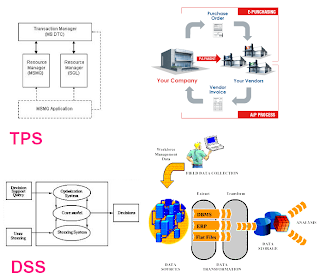1. List, describe, and provide an example of each of the five characteristics of high quality information.
 |
| High Quality information. Source: http://bus2700-spring08.blogspot.com/2008/02/feb-5-chapter-6-valuing-organizational.html |
The five characteristics of high quality information is accuracy, completeness, consistency, uniqueness and timeliness.
§ Accuracy: if the data we have is inaccurate it means that the organisation will not have high quality information. Accuracy prevents data entry errors so that high quality information is available to the organisation.
§ Completeness: when there is incomplete data within a database the information is not of high quality to the organisation. When the data is complete the data is accurate and of high quality.
§ Consistency: the data within a database must be consistent so that when the data is shared among different departments there are no errors, therefore leaving the organisation with high quality information.
§ Uniqueness: the data that is entered into the database must be unique so that the reliability of the organisation is held because the same data is shared within different departments allowing the business to have high quality data that differs from other organisations.
§ Timeliness: data needs to be updated within a timely manner so that the business has up to date and reliable information that can be used within the organisation, so that it is of high quality.
2. Define the relationship between a database and a database management system.
The relationship between database and a database management system is profound. A database is defined as ‘… the heart of an organisation, it stores key business information such as:’ (Baltzan et al 2010)
² Sales data – Customers, sales and contacts
² Inventory data – Orders, stock and delivery
² Student data – Names, addresses and grades.
A database management system is a ‘group of programs that manipulate the database.’ (Baltzan et al 2010). It provides businesses with a line between the database and the users that is has within an organisation and other application programs.
The relationship between the two, database and database management system, allows for business organisations to have an effective and useful database. The database management system are able to monitor and manipulate the already existing database to co-exist with users and other programs.
 |
| Database management system. Source http://discusstech.org/2011/05/difference-between-dbms-and-rdbms/ |
3. Describe the advantages an organisation can gain by using a database.
When using a database approach an organisation can gain many advantages. These advantages include data security, data integrity and data independence.
² Data security – data security from the data base approach ensures that the organisations data is safe from theft, destruction or modification. This allows for the organisation to ensure that their data is of higher quality than that of their competitors.
² Data integrity – data integrity is an advantage gained from the database approach and includes the data meeting all limitations placed upon the organisation.
² Data independence – data independence is another advantage gained by organisations using the database approach. Data independence means that the data and the applications used are independent of each other. This allows the data to be accessed by many different applications.
4. Define the fundamental concepts of the relational database model.
A rational database is a collection of tables that stores information and data and can be accessed in many different ways but does not have to reorganise the tables used within the database.
The fundamental concepts of a rational database model are:
² ‘Content: What data should be collected and at what costs?
² Access: What data should be provided to which users and when?
² Logical structure: How should data be arranged so that it makes sense to a given user?
² Physical organisation: Where should data be physically located?’ (Baltzan et al, 2010)
 |
| Relational database model. Source: Google.com |
5. Describe the benefits of a data-driven website.
A data driven website uses databases to store information that is taken from users when using the internet and is constantly updated and uses the database to identify the customer’s needs.
The benefits of a data-driven website include:
² ‘Development
² Content management
² Future expandability
² Minimising human error
² Cutting production and update costs
² More efficient
² Improved stability
² Real time information like stock levels and price changes.’ (Baltzan et al, 2010)
http://download.oracle.com/docs/cd/B28359_01/server.111/b28318/bus_intl.htmBook source:
Baltzan, Phillips, Lynch, Blakey. 2010. Business Driven Information Systems. McGraw Hill. Sydney, Australia.


















